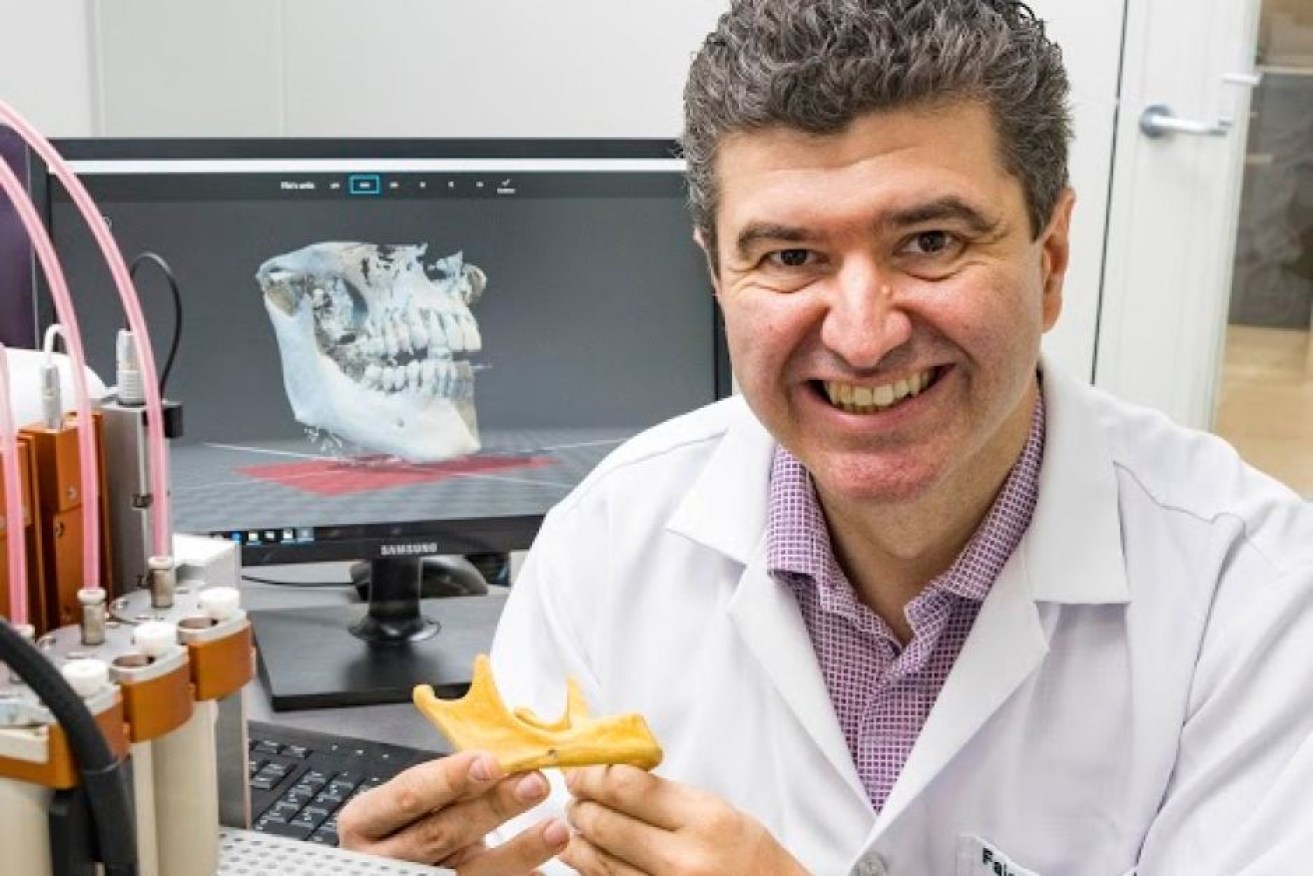3D tissue printing ‘could revolutionise dentistry’

A new study using 3D printing to create tissue and bone could revolutionise dentistry and provide benefits for dental health in remote communities.
Periodontist Professor Saso Ivanovski, from Griffith University’s Menzies Institute, has pioneered the work which plans to use a “bioprinter” to grow missing bone and tissue from a patient’s own cells.
The new technology will be a significant improvement on traditional methods where bone and tissue are taken from other parts of the body such as the hip and occasionally the skull, Professor Ivanovski said.
• Seven ways to beat private health insurance hikes
• What is ‘imposter syndrome’ and do you have it?
“These procedures are often associated with significant pain, nerve damage and postoperative swelling,” he said.
If the study is successful, patients will be able to have a CT scan of the damaged region sent to a 3D bio-printer to manufacture a replacement part.
This means that remote patients could have CT scans done in regional centres that can then be sent off for printing, rather than needing to visit major hospitals for the procedure.
“The cells, the extracellular matrix and other components that make up the bone and gum tissue are all included in the construct and can be manufactured to exactly fit the missing bone and gum for a particular individual,” Professor Ivanovski said.
‘You won’t be able to identify what is old bone and new’
Using structures grown from the cells of the patient also diminishes the risk of rejection and allows the new structure to grow into its surrounding tissue.
“At the end of the whole process, you wouldn’t be able to identify what is old bone and new,” Professor Ivanovski said.
The technology is an Australian first and follows similar breakthroughs in manufacturing living human tissue by 3D printing overseas.
The three-year study has been given a $650,000 grant from the National Health and Medical Research Council, and researchers are aiming for pre-clinical trials within the next year.
“By the end of the year we want to start implanting some of the constructs in some of the more straightforward processes,” Professor Ivanovski said.








